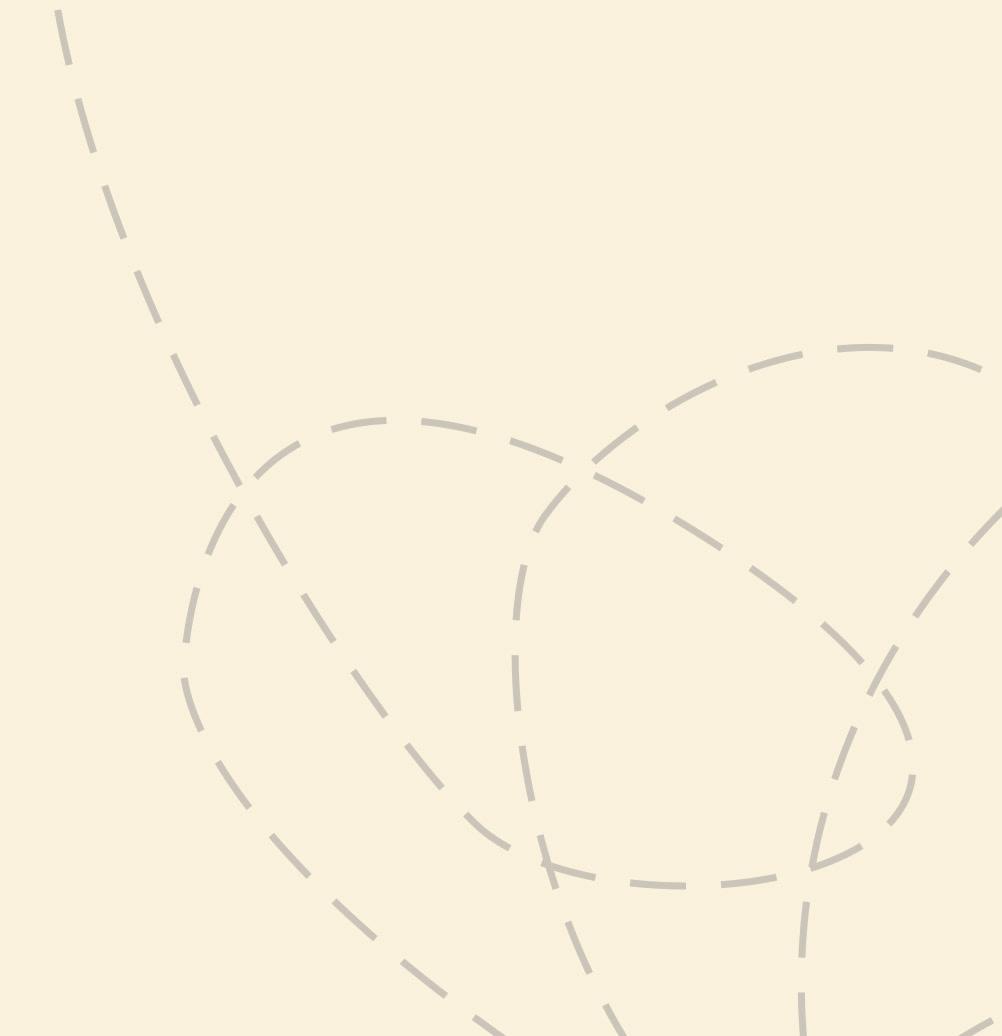
J. Doyne Farmer
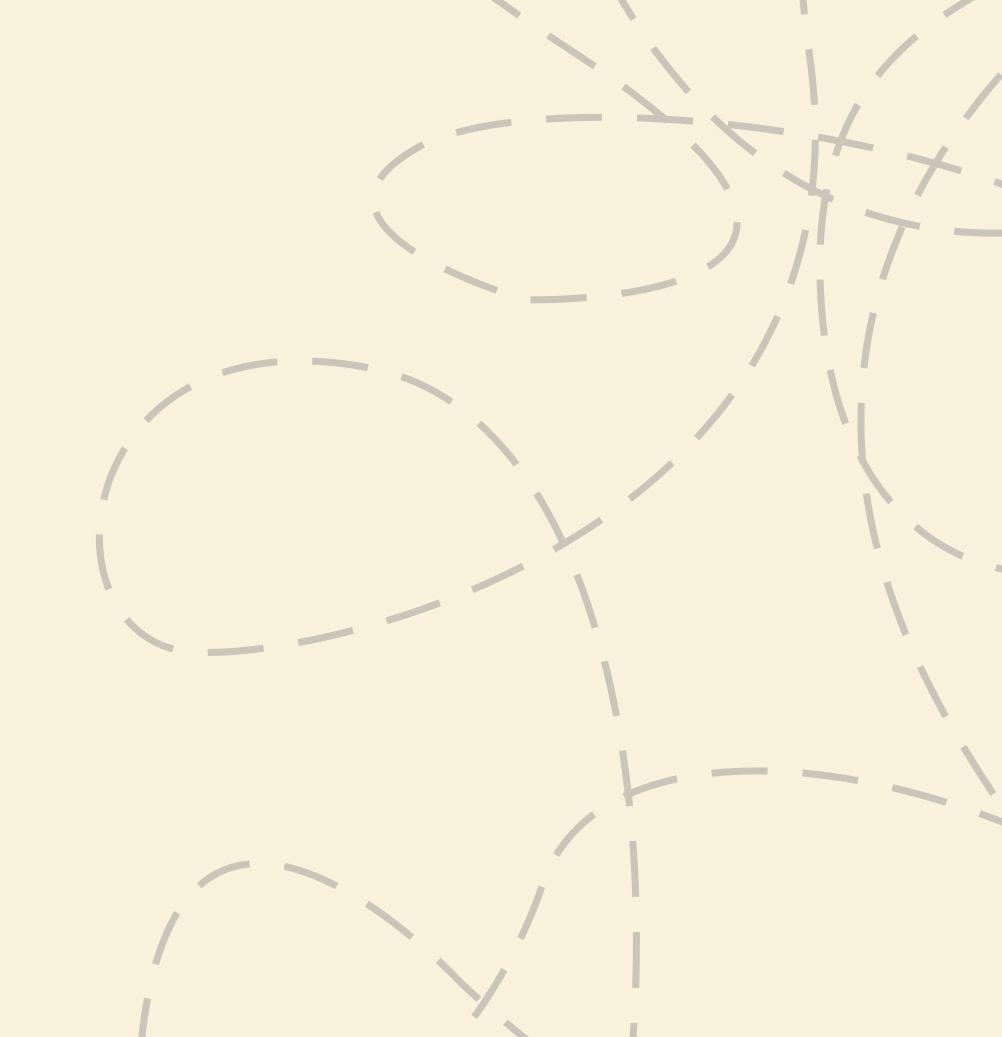
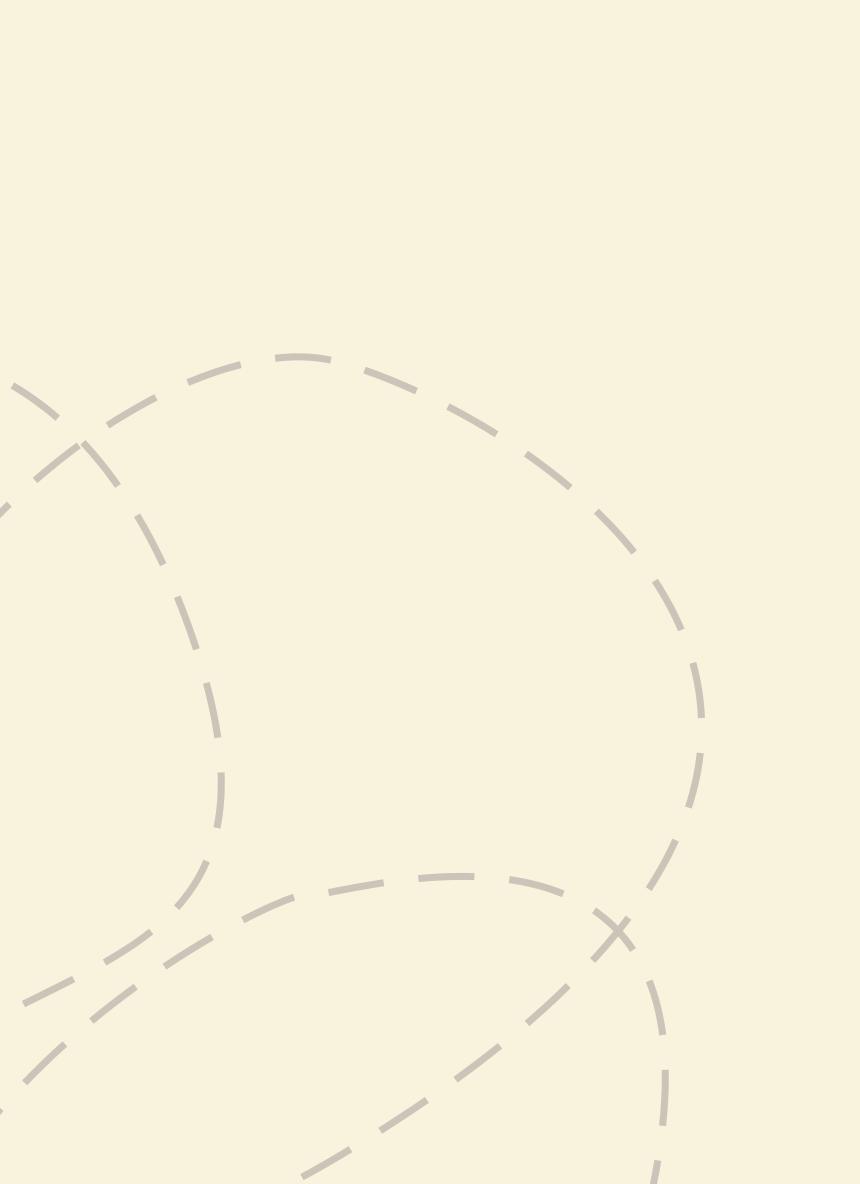








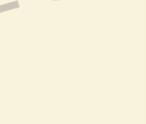

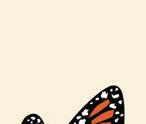

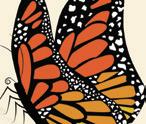
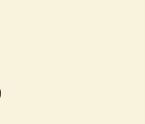
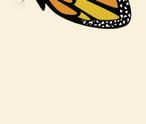
























ALLEN LANE an imprint of
UK | USA | Canada | Ireland | Australia India | New Zealand | South Africa
Allen Lane is part of the Penguin Random House group of companies whose addresses can be found at global.penguinrandomhouse.com.
First published by Allen Lane 2024
Copyright © J. Doyne Farmer, 2024
The moral right of the author has been asserted
Set in 12/14.75pt Dante MT Std Typeset by Jouve (UK), Milton Keynes Printed and bound in Great Britain by Clays Ltd, Elcograf S.p.A.
The authorized representative in the EEA is Penguin Random House Ireland, Morrison Chambers, 32 Nassau Street, Dublin D 02 YH 68
A CIP catalogue record for this book is available from the British Library
ISBN : 978–0–241–20197–8
www.greenpenguin.co.uk
Penguin Random Hous e is committed to a sustainable future for our business , our readers and our planet. is book is made from Forest Stewardship Council® certified paper
This book is dedicated to my childhood mentor, Thomas Edward Ingerson (1938–2019).
During the ten years it took me to write this book, I often felt like a monkey with a typewriter; without extensive help from my friends, colleagues and editors, it would have been incomprehensible garbage. I should first thank my agent, John Brockman, who nagged me to write this book for thirty years, and my other agent, his son Max Brockman, who helped push it over the finish line. On the editorial front, I would like to thank Vince Bielski, Seth Ditchik, Edward Kastenmeier, Sienna Latham, Dorothy Nicholas and Andrew Weber for valuable suggestions. Kurt Vonnegut once said that when he wrote, he always imagined he was talking to his sister; Shanny Peer played that role for me, but much more: She encouraged me, forced me to be clear, made insightful suggestions and spent innumerable hours editing every line. Sara Lippincott did a superb edit from front to back, further streamlining my rambling thoughts. I was lucky to get Keith Mansfield as my editor at Penguin, who made creative, thoughtful suggestions and empowered me to make the book lively and fun. I was similarly lucky to have Alba ZieglerBailey as my copyeditor, who painstakingly read every word, improved my phrasing, added hundreds of needed commas and then generously let me take some of them out. Luca Mungo wrestled my motley collection of crude figures into a consistent and well-rendered form, and David Mackintosh produced a richly ironic visualization of the wilderness of bounded rationality. My fellow complexity economists Brian Arthur, Rob Axtell, Peter Barbrouck-Johnson, Jean-Philippe Bouchaud, Maria del Rio-Chanona, Alissa Kleinnijenhuis, François Lafond, James McNerney, Penny Mealy, Jose Moran, Scott Page, Marco Pangallo and Anton Pichler helped create the substantive material for the book, guided me in its articulation and gave important feedback. My open-minded, mostly
mainstream colleagues John Geanakoplos, Jeremy Large, Andrew Lo, Larry Summers and Alex Teytelboym had the courage to engage with me, read the book and correct many errors (but those that remain are all mine). Meanwhile, my friends Sander Bais, Kingsmill Bond, Chris Magee, Fotini Markopoulou and Peter Turchin helped me debug my explanations to make them clear, and my friends Karen Lawrence, Steve Lawton and Robb Lentz even went above and beyond the call of duty and read the manuscript twice! (Giving very useful feedback each time.) My friend and musical partner Tim Palmer improved my description of how we predict the weather. I would particularly like to thank Eric Beinhocker and Cameron Hepburn at Oxford for their years of collaboration and support. Finally, the underlying research presented here would not have been possible without the people and organizations who have funded it through the years, with special mention for Jack Mezaros, Leslie Haroun, George Soros, Baillie Gifford and most of all Gerald Smith, whose generous no-strings-attached contribution allowed the complexity economics group at Oxford to thrive, and Dorothy Nicholas, whose organizational skills keep us from falling into chaos.
Comparison of the trophic structure of the US and Chinese economies
4. A network view of the job space for the United States in 2016 (from Mealy, del Rio-Chanona and Farmer, 2018) 66
5. The Beveridge curve (from del Rio-Chanona et al., 2021) 69
6. Our model for the epidemics’ effect on sickness and the economy (from Pangallo et al., 2023). 79
8. The wilderness of bounded rationality (illustration by David Mackintosh)
9. An endogenous business cycle from a simple agent-based model (from Asano et al., 2021) 126
The clustered volatility of price movements
11. Does news explain clustered volatility? (from Cutler, Poterba and Summers, 1989) 167
12. Comparison of the U.S. stock market, broker-dealer leverage and volatility (from Aymanns et al., 2016) 206
13. Comparison of two agent-based simulations of the stock market (from Aymanns and Farmer, 2015)
14. A simple schematic diagram of the Basel leverage-cycle model (from Aymanns et al., 2016)
15. Intermittency in fluid turbulence
16. Differences in the price of some goods in the US from 1998–2022
17. Prediction made in 2013 of the likely cost of solar photovoltaic modules
18. Historical global cost and deployment of energy technologies (from Way et al., 2022)
19. Track record of projections for PV costs and floor costs (from Way et al., 2022)
20. The Climate Policy Laboratory 264
There has always been a strand of thought [ . . .] that holds that we cannot hope to understand the major events in the life of an economy, and perhaps also its everyday behavior, without entertaining principles of disequilibrium.
Edmund S. Phelps (1991)1On March 16, 2020, I mobilized a team of some of my best Oxford students, postdocs and former-students, and we began a crash program to build a model to predict how the economy would respond to the COVID -19 pandemic. It was clearly only a matter of time before the disease would become widespread and many governments would instigate lockdowns, with an enormous economic impact. But there are many ways to implement public health measures. Governments would need to decide what restrictions to impose and which industries should be closed. Was there a sweet spot that might provide a reasonable compromise between preventing the suffering that would be caused by infection and mitigating the suffering from economic stress? Could we predict the economic impact of COVID ? (At the risk of spoiling the punchline, the answer is yes.)
COVID was going to shock the economy from both sides. On the demand side, with or without government-imposed lockdowns, consumers would curtail many of their former activities; on the supply side, non-essential industries where workers were in danger of infection were likely to be forced to cut back or shut down completely. To understand the economic impact, we needed to forecast the shocks in advance and understand how they might be amplified as they propagated through the economy.
Our first task was predicting the shocks. To do this on the demand side, we used a study compiled by the US Congressional Budget Office in 2006, which predicted what would happen to demand for the products of different industries during a flu epidemic.2 Although the study took the SARS flu virus as the disease template, and there are some differences between SARS and COVID, it provided a reasonable guess at how consumers would respond. As it turns out, they got a few things wrong, such as anticipating that demand for health care would go up (it went down, because of deferral of routine treatments), but in general their predictions were sound.
Predicting the supply shocks was harder, and we had nothing to guide us. Two remarkable scientists and former graduate students of mine, Penny Mealy and Maria del Rio-Chanona, led the effort to assemble this piece of the puzzle. When the pandemic broke out, Penny had already left Oxford and returned to her hometown of Melbourne, Australia, where she was a postdoctoral fellow at Monash University. She had to be awake late at night to make our daily Zoom calls, but this arrangement had the advantage that she and Maria could hand problems back and forth, so someone was working on the model twenty-four hours a day.
Maria and Penny took advantage of a remarkable data set compiled by the US Department of Labor that goes by the acronym O*NET, and provides detailed information about almost 800 different occupations.3 It includes key facts we needed, such as the typical proximity of workers to each other, which we used to estimate which kinds of workers would be exposed to infection. It also provided information about the number of employees who work in each industry. O*NET enabled Maria and Penny to construct a remote-labor index that predicted which occupations would be able to work from home.
To help us understand which industries governments might shut down, another of my former students, Marco Pangallo (who you will hear a lot about later), found an Italian government list of nonessential industries.4 The combination of Maria and Penny’s remote-labor index and Marco’s list of non-essential industries
allowed us to predict the drop in the labor force in each industry. By assuming that output would drop proportionally to the number of workers removed from the labor force, we were able to predict the direct economic impact the pandemic shutdown would have on each industry.
Our paper predicting the supply and demand shocks for the second quarter of 2020 was publicly released one month later, on April 14, 2020.5 For reasons of data convenience, our paper only addressed the US economy.6 Compared to the pre-COVID period, we predicted that the direct shocks would reduce US GDP by about 20 per cent, jeopardize 23 per cent of jobs, and lower total wage income by 16 per cent. (These numbers are quarterly, so if the shock lasted for only three months, the annual effects would be proportionally smaller.) We also predicted that there would be a relatively small effect on high-wage occupations (a 6 per cent job loss) and a large effect (41 per cent) on low-wage occupations. Low-income workers also had a much higher probability of becoming infected. In hindsight, these predictions were broadly right. Nonetheless, we knew they were missing a key effect that would make the impact even bigger: These were only the direct shocks, which would be amplified as they reverberated around the economy. Understanding how this would unfold is complicated because supply and demand shocks flow in opposite directions. Goods and services flow downstream from supply to demand, whereas demand shocks flow upstream: If the demand for a consumer product – say, bicycles – drops, the demand for bicycle tires drops, which means the demand for synthetic rubber drops. Conversely, supply shocks move downstream: If there’s a shortage of workers to make synthetic rubber, this creates a shortage of tires, which creates a shortage of bicycles. Supply and demand shocks interact as they move downstream and upstream, colliding with one another and amplifying the initial shocks. This can reduce economic output even further.
The economic impact of the COVID pandemic combined three exceptional features that made standard models inadequate: First, the shocks were highly industry-specific, making it essential to
model the economy with a high degree of resolution; second, the shocks affected supply and demand simultaneously; and, third, the shocks were huge and happened really fast.
Standard economic models assume equilibrium, which means that supply and demand are always equal. The COVID shocks hit the economy so hard and so quickly that they knocked it far out of equilibrium, making standard models unsuitable. We needed a model that could track the dynamics of the shocks without assuming equilibrium, and we needed to build it very quickly. The fact that there were no well-recorded historical examples of similar pandemics made this particularly challenging.
Because we were based in England, and because we knew the British government was actively considering its options, we decided to shift our focus to the UK . The effort to build our model of COVID shock dynamics was led by my Austrian graduate student Anton (Toni) Pichler, who had just completed his DP hil (what Oxford calls a PhD) in mathematics. We needed to track the factors that would lower economic output and understand their impact. On the demand side, consumers might reject a good or service for fear of infection; for example, even though airlines and other modes of transportation were deemed essential, their customers largely abandoned them. On the supply side, an industry might not have the workers and material inputs needed to produce its product, or it might be deemed inessential and be forced to shut down.
To understand how all these factors would affect each industry we needed what is called a production function in economics. A production function is a kind of recipe that tells how much can be produced with a given amount of each input. Making steel, for example, requires iron, coke, coal and labor, all in the right proportion. Unfortunately, there was no standard economic model of the production function that was sufficiently well grounded in data to be useful. The key issue was substitutions: Which inputs could be substituted, and to what extent? We needed to know this industry by industry. The steel industry also has inputs from the management consultant industry and the restaurant industry (to run
cafeterias), but it can get by without these if it needs to. Neither of the standard choices for production functions worked – either they allowed too many substitutions or none at all. We needed something more realistic. Luckily, we managed to convince a company called IHS Markit to perform a survey of their industry analysts pro bono, which they did in only two weeks, identifying the critical inputs for each of fifty-two different industries.7
We modeled each industry as if it were a single firm; this is a crude approximation, but it was good enough for our purposes. We assumed that each industry began the pandemic with a normal level of inventory. As problems occurred, inventories dropped; if an industry ran low on a critical input, its output dropped. Similarly, if the demand for the industry’s output dropped, or if it didn’t have enough workers because of COVID restrictions, its output would drop. Bear in mind that one industry’s outputs are often another industry’s inputs. Our model tracked the demand shocks as they flowed upstream and the supply shocks as they flowed downstream, colliding with one another and lowering the overall output of the economy. It also allowed us to feed in the shocks we predicted in our first paper (adjusted for the UK ), watch them propagate, and forecast the overall hit to Britain’s GDP, unemployment and other economic indicators under different lockdown scenarios.
In early May 2020, the UK had already been in a severe lockdown for more than a month, and the government was considering what to do next. We ran our model for several different scenarios and evaluated their economic impact. For each scenario, we also estimated the expected number of COVID infections, using standard methods from epidemiology. Extending the severe lockdown would reduce the number of infections but increase the economic hit, while relaxing it entirely would cause a lot of deaths, but with less economic stress. There were no good choices, but we found a ‘least bad’ choice, leaving all upstream industries open while banning person-to-person participation in consumer-facing industries. Under this scenario, infections were only a little worse than under a total lockdown, but the economy suffered much less. On May 8,
completely exhausted from our marathon effort, we sent our paper to UK government officials.8 A few days later they relaxed the lockdown along the lines we recommended.
A post-mortem analysis shows that we did extremely well. We predicted a 21.5 per cent contraction of GDP in the UK economy in the second quarter, with respect to the last quarter of 2019, which was remarkably close to the actual contraction of 22.1 per cent. To put this in perspective, the median forecast by several institutions and financial firms was 16.6 per cent and the forecast by the Bank of England was 30 per cent. Of course, it’s easy to get lucky forecasting a single event, but, because we had made forecasts for every industry sector, we actually made fifty-two forecasts, and most of those were pretty good too. Our post-mortem analysis confirmed that we succeeded because our model had what I call verisimilitude – it rendered the most important mechanisms affecting the economy with enough realism to provide accurate predictions. Our model has since been used by another group, who (retrospectively) used it to predict the shocks to the Belgian economy, where it performed similarly well, and it has been used to forecast the consequences of the Ukraine War for the Austrian economy.9
Our effort provides a proof of principle for the usefulness of complexity economics, which is the topic of this book. Complexity economics is an interdisciplinary movement of rebellious economists and other scientists who aim to better understand the economy using principles that are completely different than those of standard economics. Our COVID model was the first to use complexity-economics methods to make an accurate prediction of an important economic event, outperforming the standard models. This was done in real-time – meaning before it happened – so no one can accuse us of cheating. Complexity economics is a movement that has been a long time coming, but it is now taking off – complementing and competing with the standard methods that have dominated mainstream economics for more than a century. In my career I have had the good fortune to participate in three major scientific revolutions in the understanding of chaos, complex
xviii Prologue
systems and machine learning. Each of these movements began on the fringe of the scientific establishment and slowly – then suddenly – moved into the mainstream. Complexity economics, which applies complex-systems ideas to economics, is a revolution-in-progress whose moment is about to come.
Here I explain what complexity economics is, what it has already done, why its time is ripe and how it can make the world a better place. This is a story of scientific discovery, which is the best adventure available in the modern world. 10 This book is simultaneously a reflection on what the economy is, an account of how complexity economics can better guide it, a chronicle of a scientific revolution, a story about the evolution of science and the scientific method, and a memoir. I hope you enjoy it.
Being an optimist, I have hope that the profession [of economics] will someday get into a scientific mode, based on anthropological observation of behavior and computer simulation of interaction.
Barbara Bergmann, pioneer of micro-simulation (1980)1
We live in an age of increasing complexity – an era of accelerating technology and global interconnection that arguably holds more promise, and more peril, than any other in human history. New means of flourishing lie tantalizingly at our fingertips, but Armageddon is all too easy to imagine. The fossil fuels that power the global economy have generated remarkable wealth, but they threaten to destroy it through climate change, an immense tsunami rolling toward us from the future. Automation and artificial intelligence are creating prosperity for some and unemployment for others. Financial crises and growing inequality have contributed to global polarization and the retreat of democracy.
Many of these problems are rooted in the economy.2 Climate change is caused by economic activity, automation is intended to increase economic productivity, and financial crises and inequality are the result of poor management of the economy. Public policymaking for guiding the economy relies on theories and models that frame government debates, refine options, and provide arguments for and against proposed changes. Just as important, economic models and theories shape our intuition and affect how we think about the world and the decisions we make.
Unfortunately, the guidance provided by existing economic models has often failed. The 2008 global economic crisis offers a
good example. A couple of years before the crisis started, top economists at the New York Federal Reserve Bank became concerned about the possible dangers of a crash in the housing market. They asked the Federal Reserve Bank US model (FRB /US ), one of the most welldeveloped economic models in the world, what would happen to the national economy if the average house price dropped by 20 per cent.3 ‘Not much,’ was the answer.4
The economists’ concerns were remarkably prescient: Between January 2007 and January 2009, the average price of a house sold in the US dropped by about 23 per cent. The FRB /US model’s prediction had been horribly wrong, underestimating the effect on the US economy by a factor of 20. At the time, the financial crisis of 2008 was the worst period of global economic decline since the Great Depression of the 1930s. In the United States alone, five million people lost their jobs, unemployment rose to 10 per cent and the economy lost some $10 trillion – and the effect on the rest of the world was even bigger. The failure of economic models was universal. The President of the European Central Bank, JeanClaude Trichet, later confessed to his colleagues, ‘As a policymaker during the crisis, I found the available models of limited help. In fact, I would go further: In the face of the crisis, we felt abandoned by conventional tools.’5
Contemporary science and technology can help us understand and solve the world’s problems in ways that differ dramatically from those offered by the ‘conventional tools’ of economics. We are now able to collect data on economic activity at an unprecedented scale. Modern computers are capable of modeling the global economy with a remarkable level of fidelity and detail, and could be used to guide us through crises and help create an economy that is sustainable, fair and prosperous.
This is not happening, at least within mainstream economics. There have been improvements to the conventional tools, but they don’t go nearly far enough. The problems are inherent in the conceptual framework that dominates the profession. While this framework is useful for wellspecified problems, like designing a
more efficient auction or understanding the strategy of labor negotiations, it is illsuited to addressing big, messy, complicated, realworld problems. The core assumptions of mainstream economics don’t match reality, and the methods based on them don’t scale well from small problems to big problems and are unable to take full advantage of the huge advances in data and technology. For important global issues, such as climate change, standard economic theory’s wrong answers have provided a rationale for inaction, leading us to the brink of global catastrophe. Nobel Prizes have been given to economists whose theories were based on idealized arguments with no empirical support, providing fodder for neoliberal policies that led to extreme inequality and fueled sociopolitical polarization.
This book is not about criticizing economics – there are plenty of books doing that already. It is about how to do economics differently to take proper advantage of big data and computer power, to create economic models that make better predictions and to give better policy advice about the hard problems facing the world. To be clear, this book is mostly about macroeconomics – the branch of economics that focuses on largescale phenomena like inflation and unemployment – and finance, which is about money and investments. We will focus exclusively on economic theory, rather than economic data analysis using statistical methods. This is called econometrics in economics and machine learning in the field of artificial intelligence. (In both cases, models are formed simply by fitting functions to data – economists tend to favor linear functions, while computer scientists prefer neural nets.)
By theory, I mean building models of the world based on assumptions about how it works. Newton’s laws of gravity and motion, for example, make it possible to predict the motion of comets and planets and explain why the planets move as they do. Statistical methods, in contrast, illuminate regularities in data and exploit them for prediction without making underlying assumptions. Econometrics has begun to analyze large data sets and is currently yielding many important results, while machine learning is exploding. Nonetheless,
though statistical analysis is extremely useful, there are fundamental limits to what it can do.6 Statistical analysis can help us build a picture of the world as it is, but it can make inferences about the future only if the underlying behavior remains the same. In a genuinely new situation, statistical regularities may shift. A more reliable way to anticipate what will happen when the world changes is with a theory – as long as it is based on mechanisms that do not change. A famous example of why this is so important in economics is the Lucas critique, which I describe in Chapter 5.
Economics is fundamentally harder than physics because, unlike planets, people can think, and their behavior can change as a result. Economic theory has to explain the behavior of agents, like households or firms, who make decisions, such as what to consume, where to work, how much to work, where to invest, what to produce, how much to produce, what price to charge and how to innovate. There is a standard template for building economic theories that incorporate agents’ ability to reason, which evolved over the last 150 years and gelled into its present form in the 1970s. This template, which I will call standard economic theory, assigns each agent a utility function describing her preferences. For example, in standard macroeconomic models, households get utility from consumption and firms get utility from making profits while minimizing risk. Under standard economic theory, each agent makes decisions that make her own utility as large as possible. To find these decisions and understand their economic consequences, economists write down and solve equations that express this in mathematical terms. This is the basis of all economic theories that are taught in textbooks, and all the theoretical models that economists use to evaluate new policies and provide guidance to the economy.
The science of complexity economics offers a completely different alternative. Complexity economics uses ideas and methods from the science of complex systems, an interdisciplinary movement I helped found in the 1980s that spans the physical, biological and social sciences.7 Complex systems is the study of emergent phenomena. These occur when the behavior of a system as a whole is
Introduction
qualitatively different from that of its individual parts. A good example is the brain: An individual neuron is a relatively simple device that takes in stimuli from other neurons and produces new stimuli. An individual neuron is not conscious, but somehow the 85 billion neurons in the human brain work together to produce consciousness and thought.
The economy is a wonderful example of a complex system, with many different emergent phenomena. The economy allows us to support each other by specializing – concentrating our effort on what we do best, while letting others do what they do best. By coordinating our efforts, it allows us to build things like rocket ships or laptops that no individual could ever build on her own.
While standard economic theory can sometimes provide valuable insight about emergence, this is not its strength – it was built for other purposes. In contrast, complexsystems scientists have identified and developed a standard toolkit of concepts and methods that they use to understand emergent phenomena such as brains, ant colonies, the internet or cities. Complexity economists like me are rebels who have adapted the complexsystems toolkit to study economics. I’m part of a band of some fiftyorso complexity economists worldwide (the term was coined by Stanford economist W. Brian Arthur, one of its pioneers).8 Complexity economists are a looseknit group who often have divergent views. Some aspects of the perspective I present in this book are held in common; many are my own.
Complexity economics is completely different from standard economic theory. To begin, standard economic theory and complexity economics use very different models for how agents reason and make decisions. Standard economics usually assumes forwardlooking agents who are intelligent enough to reason their way through any problem. These hypothetical rational agents are a bit like Star Trek ’s Mr Spock: They use all available information to make the best possible decision – the one that yields highest utility. While the nowmainstream field of behavioral economics draws on facts from psychology and sociology to challenge this view, derisively referring
Introduction
to rational agents as ‘Homo economicus ’, there is still no widely used workable substitute. Although behavioral economics is now almost universally accepted, the economic models that continue to influence public policy are still largely based on Homo economicus. This is because it is hard to incorporate the way real people reason into standard economic theory. The elements of standard economic theory were designed to work together as a whole, and when some are modified the others become inappropriate. Creating economic models that effectively incorporate behavioral realism to make useful predictions may be the most important problem in economics today.
Complexity economics, conversely, assumes from the outset that agents are boundedly rational, meaning they make imperfect decisions and have limited ability to reason. Our models for boundedly rational agents are less prescribed – they can be based on psychology experiments, census data, expert opinions or a variety of other sources (see Chapter 6). Agents can learn to achieve goals, but they typically only partially achieve them.
The tools of the trade are very different. Standard economics models are written in terms of equations, and standard economists solve them by hand, if they can, or with computers if they can’t. Though we use equations too, computer simulation is the workhorse of complexity economics. Digital technology enables us to create analogs of the real world inside the computer, sometimes called digital twins. Essential events in the real world have their counterparts in a simulated world. Scientists now use computer simulations to study just about everything – galaxy formation, proteinfolding, the brain, epidemics, battle tactics and traffic jams. While mainstream economists use computers to solve equations, this is not simulation in the usual sense because there is no attempt to create analogs for how things actually happen in the real world.
The simulations used in complexity economics are called agentbased models. 9 As the name emphasizes, the individual building blocks of these models – such as households, firms or governments – make
decisions; they have agency.10 Algorithms describing how each agent makes decisions are programmed into the computer. As the agents gather information and make their decisions, their actions change the state of the economy, which in turn generates new information, causing the agents to make new decisions, and so on. The simulations can be repeated indefinitely, to study the interactions of individual agents over time. In agentbased models, economic phenomena emerge from the bottom up, just as they do in the real world. The algorithms programmed into the computer to model decisionmaking might consist of simple behavioral rules that social scientists have uncovered, like ‘imitate your neighbors’ or obvious rules of thumb that everyone follows, like ‘buy undervalued assets’. Or they might be learning algorithms that capture how agents adapt their decisions over time to improve their effectiveness. Computers can easily deal with complicated, messy facts, enabling us to model decisionmaking with as much realism as we wish. And there are additional benefits of this realism: In the presence of uncertainty, simple rules of thumb can be surprisingly effective – sometimes more effective than complicated reasoning.11
There are many advantages to using simulations rather than mathematical equations, but one of the most important is the ability to model the diversity of the actors in the world – what economists call heterogeneity. 12 Modeling heterogeneity is a hot topic in mainstream macroeconomics, but it is very hard to fit this into the standard framework. Computers, in contrast, easily keep track of diverse agents, making it possible to do this as realistically as needed.
The theoretical frameworks of standard economics and complexity economics are also very different. Standard economics draws heavily on mathematical methods from the theory of optimization. This is like finding the highest peak in a landscape (except that here it is an abstract landscape representing utility). Standard economists like to prove theorems about their models whenever they can. We complexity economists also use mathematics, but usually do so to understand something observed in simulations. The mathematical
tools are taken from a much broader palette, using methods and concepts from fields as diverse as dynamical systems, statistical physics, ecology and evolutionary biology.
Last but not least, standard economic theory assumes from the outset that transactions only take place when supply equals demand, a state that is called equilibrium. Complexityeconomics models, in contrast, do not necessarily assume equilibrium, but regard it as an emergent property when it happens.
Taken together, all these elements lead to a very different way of dealing with change. Change in the economy can come from without: Think of the COVID pandemic, which was an outside force affecting the economy. Change can also come from within, like the financial crisis of 2008, which arose via the economy acting on itself. Standard economics has a difficult time dealing with changes that arise from within the economy. The leading mainstream models of the financial crisis, for example, have to postulate the existence of outside ‘shocks’ to generate the necessary change.13 It is obvious that is not how it really happened, but standard models can only explain it ‘as if’ it happened this way. In contrast, agentbased models are inherently dynamical, making it natural to explain how the economy changes from within. We will see examples in Chapters 3, 7 and 11 illustrating how complexity economics replaces ‘asif’ reasoning with ‘asis’ reasoning, providing more sensible explanations for how the economy changes from within itself.
Perhaps the biggest advantage of complexity economics is its ability to solve hard problems. A model is tractable if it is easy to build and use to answer questions. Standard economic theory yields tractable models in simple settings, but this breaks down as things get complicated – it becomes too hard to solve the equations, and it becomes increasingly difficult to add new features to a preexisting model. As a result, when a problem gets complicated, mainstream economists are forced to oversimplify by leaving things out.
The financial crisis of 2008 is a good example where this leads to problems.14 All the models at the time ignored the possibility that homeowners and businesses might default on their loans.
Economists knew that default was important, but including it in their models was difficult, so they left it out. As it happened, default played a central role in the crisis. The traditional models, updated since the crisis, now include default, but only in a simplified fashion – the revised models still omit many essential economic factors that may well figure in future crises.15 There is no model based on standard economic theory that comes close to including all the facets of the economy that could potentially lead us into trouble again.16
Making realistic models requires good data. Agentbased models are naturally suited to make use of the vast quantities of data currently available. Worldwide, tens of millions of firms and billions of households make trillions of transactions annually. It would be extraordinarily useful to build a detailed map of the global economy, but, remarkably, no such map exists. If we built one, it would show us the structure of the economy in detail and enable us to track its changes over time. We are now developing agentbased economic models at the level of individual firms and households that can use such data. These models study the economy from the bottom up: Macroeconomics emerges from microeconomics.
The choice between standard economic theory and agentbased models reflects a broader debate in social science. Milton Friedman, a prominent twentiethcentury economist, argued that models should be evaluated solely on how good their predictions are, rather than on the plausibility of their assumptions.17 Even if the assumptions of a model are farfetched, he wrote, the economy may behave ‘as if’ they are true. He used the example of expert billiards players, who may not understand the laws of physics but play billiards as if they did. Behavioral economics has made it abundantly clear that people don’t make decisions in the way that standard economic models assume they do. Nonetheless, to justify their models, economic theorists continue to assert that the economy behaves ‘as if’ people did.
There is universal agreement that models should be judged based on their ability to predict empirical facts. The debate is whether this should be the only criterion. In social science, models often fit the
Introduction
facts loosely and no model fits them tightly. We should be very suspicious of models that require implausible ‘asif’ arguments. Instead, I believe we should follow what I call the principle of verisimilitude : Models should fit the facts and their assumptions should be plausible. Assumptions that seem wrong from the outset are more likely to lead to false conclusions than plausible assumptions. We need to replace ‘asif’ reasoning with ‘asis’ reasoning.
The principle of verisimilitude recognizes that models need to contain the key features of the phenomena they attempt to explain, but they needn’t be literal representations of the world; models are abstractions, and we don’t need to capture every detail. When we talk about building simulations, we aren’t trying to create The Matrix. Verisimilitude just means capturing the essential components as realistically as we can. Good models should be as simple as possible, but no simpler. Agentbased models can be complicated or simple; computers easily keep track of details that are complicated to state mathematically, so we can include as many features as we need to. Most important, we can easily add new features without changing existing features, incrementally increasing the verisimilitude of our models of the world.
There is more to complexity economics than just simulations. As already noted, it draws on conceptual frameworks that have been developed in other fields. We will see examples where it is useful to start by modeling economic agents ‘as if’ they make decisions at random, and then add enough intelligence to make a model with more verisimilitude that fits the facts. For this purpose, methods from statistical physics – which were built to cope with the random behavior of atoms – are very useful.
The insight that the economy allows workers to be specialists goes back to Adam Smith’s 1776 book The Wealth of Nations. 18 The theory of ecology, which was developed in the middle of the twentieth century, is essentially a theory about specialists. Grass is a specialist at the job of converting sunlight, soil and water into grass. Zebras are specialists at the job of eating grass and turning it into zebras, and lions are specialists in eating zebras and turning them
Introduction
into lions. Homo economicus, who can solve any problem, does not need to specialize. In contrast, the boundedly rational agents of complexity economics are specialists who use their limited abilities for what they do best. In Chapter 3 we will develop the analogy between ecosystems and economies and show how it can be used to explain an important aspect of economic growth. And in Chapters 10 and 11 we will show how it can be used to explain market malfunction, providing tools for regulators to anticipate and prevent (or at least ameliorate) financial crises.
Many of the ideas for complexity economics were articulated in the 1950s by Herbert Simon, a remarkable polymath and a key innovator in the fields of economics, artificial intelligence, cognitive psychology, management, public administration and political science. Even though Simon won the 1978 Nobel Prize in economics, the mainstream never followed his lead, and complexity economics has so far remained at the periphery of the economics profession. You might ask, ‘If complexity economics has been around so long, why didn’t it already take over the mainstream?’ The short answer is that in Simons’s day we lacked the computer power, data and understanding of human decisionmaking necessary to execute his vision. Fortunately for us, computers are now roughly a billion times faster than they were then, and our data capabilities are similarly greater. Just as computer scientists have used this new power to make great leaps forward in artificial intelligence and machine learning, complexity economists are beginning to take advantage of it as well. In the past five years or so this has allowed complexity economics to transition from a qualitative to a quantitative science, and we are in the process of moving from the conceptual to the practical phase of model deployment.
While we complexity economists sit on the fringe of academic economics, our models are beginning to be used for commercial purposes. Some of our ideas are beginning to inform models used by central banks to monitor financial markets in order to avert the next meltdown. In other applications under development, our models could help deal with rising inequality or find the best paths
Introduction for developing countries. They can predict responses to such major transitions as automation or the switch to green energy and help us make those transitions more smoothly.
A concrete example where complexity economics can make a big difference is climate change, which is perhaps the most urgent problem the world faces right now. The source of the problem is the economy, which produces and uses the fossil fuels that create greenhouse gases. We have good models for why the global climate is warming – models that are convincing to almost all scientists. In contrast, economic models for preventing climate change are highly controversial, yielding remarkably divergent answers. The 2018 Nobelist William Nordhaus, using a standard macroeconomic model, has argued that the economic cost of climatechange mitigation is so high that we should make changes relatively slowly and allow the Earth to eventually warm by 3.4°C (about 6°F).19 In contrast, my colleagues and I have shown that rapidly converting to renewable energy within a couple of decades will help keep global warming closer to 1.5°C, while likely saving us many trillions of dollars (see Chapter 13). Resolving this controversy, and doing so quickly, is essential to our future!
The new science of complexity economics involves a radical change in how economics is done. The fact that the intellectual framework is so different means a complete makeover of tools, skills and knowledge base – a cultural sea change. Not surprisingly, such a momentous shift is strongly opposed by the academic mainstream, as revolutions always are. For example, even though it is both innovative and useful, the model for the COVID pandemic described in the prologue could never be published in a ‘top’ economics journal. Why? Because it cannot be solved mathematically and, most importantly, it lacks utility maximizing agents, and thus violates the central dogma of standard economic theory. The academic departments where complexity economists work are typically not economics departments, but rather have names like Computational Social Science or, in my case, Geography and the Environment.20
Despite these barriers, complexity economics is beginning to get
support from institutions that are unhappy with the conventional tools, including a few avantgarde central banks. Commercial applications are under development. With modern technology we can now accomplish things that early pioneers like Herb Simon could only dream of. The time is ripe for complexity economics to take off.
Bringing complexity economics to fruition will require substantial time and resources. Many challenging problems still have to be solved. Nonetheless, the chances of success are high and the payoff could be enormous. We need to make this revolution happen as soon as possible; the fate of the world hangs in the balance.
I should admit that I have very little formal education in economics. I was a physics major as an undergraduate at Stanford. My only encounter with economics was in 1971, during spring of my sophomore year, when I took Economics 1, a large lecture class with hundreds of students. The professor, John Gurley, was a prominent economist who was an expert on the Chinese and Soviet economies. His lectures were clear, he was a good teacher and the math was easy, but I found many of the ideas that he stated as facts hard to believe. For example, he drew two curves on the board, one for price vs supply and another for price vs demand, and stated that the price was the point where they intersected.
Because I was borrowing my way through college, I wanted to get my money’s worth, and I always sat in the first row and asked questions.1 I raised my hand and asked him how the price arrived there. If the demand curve suddenly shifted, how would the price adjust? How quickly could it move? Didn’t we need to worry that it might under or overshoot? If things changed really quickly, maybe the price couldn’t track at all? Professor Gurley couldn’t provide convincing answers.
When I looked into this question thirty years later, I discovered that several prominent economists had worked hard to answer the same questions, without much success.2 Economists generally simply assume that prices are at equilibrium, defined as the point where supply equals demand. The idea of equilibrium originated in the latter half of the nineteenth century with the work of the French economist Leon Walras. He justified how the price could get to the intersection of supply and demand via a procedure called
Making Sense of Chaos
tatonnement (French for ‘trial and error’) that was used in the Paris stock market at the time.3 Because this process is cumbersome and time consuming it is no longer used in modern stock markets. In fact, in most modern markets transactions are made at prices where supply does not equal demand, and in some markets – like housing markets – they can be very different. As we will see, one of the contributions of complexity economics (my own work included) is in understanding how prices move when markets operate out of equilibrium, and demonstrating that this can be important.
My next encounter with economics came in the summer of 1987, at a conference called ‘The Economy as an Evolving Complex System’ at the Santa Fe Institute (SFI ), an interdisciplinary home for the study of complexity, where I was an external professor.4 SFI has grown since then, but it is still a small place, with about eight residential faculty members, though it has a much larger external faculty and a steady stream of visitors. Talks are given almost every day, on topics ranging across all of science, from anthropology to physics to zoology. At lunchtime or tea there are typically people from many different disciplines, and the discussions are often wide ranging, stimulating and fun.
This particular meeting was organized by two Nobel Prize winners – Stanford economist Kenneth Arrow and condensedmatter physicist Philip Anderson – who had invited ten economists and ten scientists from other disciplines (physics, biology and computer science) to participate. We met for two weeks in the former Christo Rey convent, which the Institute had just rented – its first physical location after two years as a virtual institution. The meeting took place in the chapel, which retained its stainedglass windows, but with the altar and cross removed and replaced by the speakers’ lectern. At the time, I was a staff scientist at the Center for Nonlinear Studies at Los Alamos, and economics was not a particular concern. However, I was curious, and I was honored by the invitation, so I accepted.
In the first week, the economists gave us a fascinating crash course in economics. My impression was that they assumed that, since physicists are good at mathematics, we would team up and help them solve
their math problems. This was not what happened. We physicists were fine with their mathematics and didn’t have much to add, but we were skeptical of their assumptions. At that point in time, the theory of rational expectations still dominated economics. Then, as now, all standard economic theories assumed some sort of equilibrium. The physicists had a reflexive reaction against both notions. To us, economic equilibrium was a potentially dangerous approximation and rational expectations seemed completely unrealistic. Our view was that people are not consistently rational and that economic theory needed to take human psychology into account. The nascent field of behavioral economics was attempting to do just that, but at that time it was still off the radar of the economists at the conference. There was consequently a great deal of arguing. Physicists tend to view themselves as the kings of the physical sciences, and economists view themselves as the kings of the social sciences, and they can both be arrogant. (At one point, Phil Anderson, who was famous for being shockingly blunt, exclaimed to the economists, ‘You don’t really believe that, do you?!’ and Harvard economist Lawrence Summers weighed in with ‘You physicists all have a Tarzan complex.’) Despite the tensions at the meeting, I learned an enormous amount and came away with a renewed interest in economics. It was obviously a field full of contradictions and bad assumptions, suggesting that it could be a rewarding place to pursue innovative research.
My interest in economics grew even more after meeting the Yale economist John Geanakoplos, whose friends all call him John G., when he directed the economics program at SFI in 1990–1991. In those days, there was a weekly SFI basketball game at a nearby park, and John G. and I were both regulars, which helped us get to know each other. One of our favorite pursuits was to argue about the pros and cons of the founding principles of economics. John taught me an enormous amount, and our dialogue eventually led to a 2009 paper called ‘The Virtues and Vices of Equilibrium and the Future of Financial Economics’, which presents a synthesis of our converging view that ‘economics needs to move in new directions if it is to continue to make progress’.5